ASUS W90Vp: ATI Mobility Radeon HD 4870... with CrossFire
by Jarred Walton on May 29, 2009 5:00 AM EST- Posted in
- Laptops
Congratulations: the LCD Is a Winner!
We performed our standard display tests as usual, which you can read about in previous reviews. While the ASUS W90Vp still uses a TN panel, the overall quality is quite a bit better than most other laptops. We understand that most (if not all) of the 18.4" notebooks are using the same Samsung panel, so at least you know you're getting a decent display if you buy one of these monster DTR systems. Here are the results.
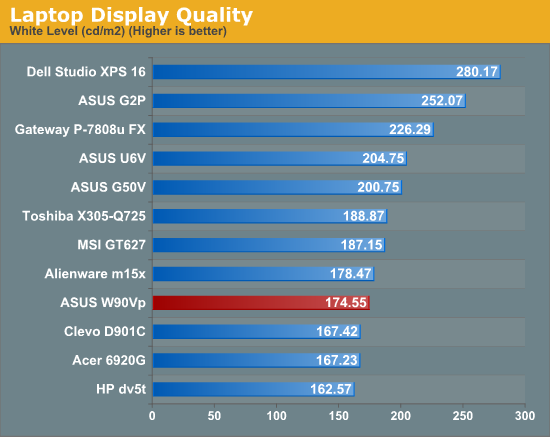

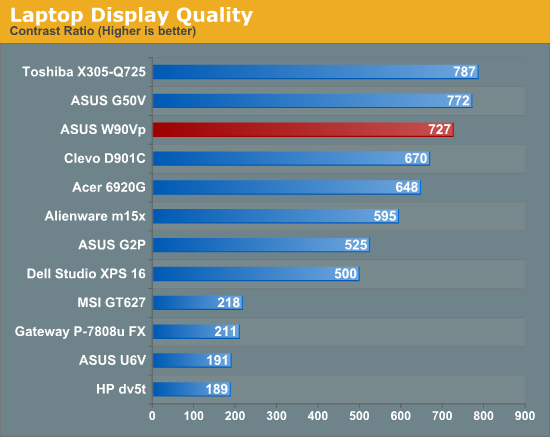
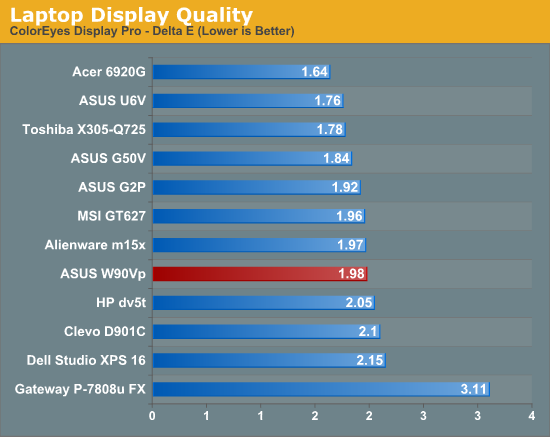

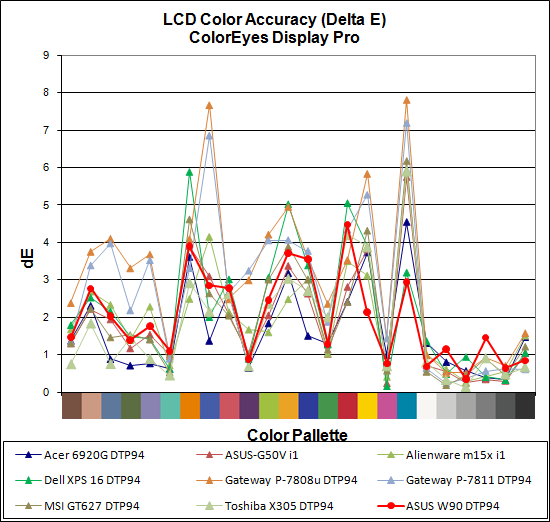
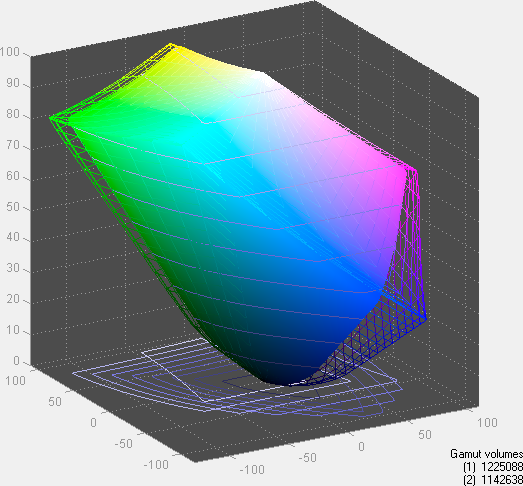
The display isn't overly bright, with a maximum brightness that's still under 200 nits, but good black levels help to provide a high contrast ratio. Color accuracy is pretty typical for a notebook, but the high 93% color gamut is once again clearly visible as soon as you start using the notebook. It's also worth noting that an 18.4" LCD sitting a few feet away can provide the same relative viewing experience as a large 50" HDTV sitting 10 to 15 feet away. Most people would still probably prefer having a large HDTV in their living room, but if you're in a crowded dorm room the ASUS W90Vp could certainly suffice as part of your entertainment center.










25 Comments
View All Comments
nubie - Friday, May 29, 2009 - link
Well. . .If there was a PCI-e standard for mobile, then maybe you could choose your graphics and the laptops would have to work properly with standard drivers?
What if you used DisplayPort for the interface to the display? Then you could plug in any graphics chip and it would work with the standard drivers.
You would of course need "thermal" stages, where you had a cap on the amount of power that it could dissipate, but if you wanted to set your PC on a fan and cut out a vent you could move up.
I think that a standard needs to be set already. There is no excuse for making a handful of extra or different pins, or form factors off by a few millimeters just so that you can't build your own system or upgrade it.
I would hope that as time progresses you could put a faster chip on a smaller more advanced process into an older laptop, or just choose the exact graphics you want (IE less powerful) in a system with the processing power you need.
JarredWalton - Friday, May 29, 2009 - link
Unfortunately, the biggest reason for a lack of unified mobile GPU standards is that OEMs along with ATI and NVIDIA like to compete in a variety of ways. Look at Apple and imagine trying to tell them they their laptops need to conform to a standard layout.It *could* happen, and for higher performance laptops with discrete GPUs like the W90Vp, that would be ideal. In fact, the GPU modules in the W90 look very similar to the GPU modules from NVIDIA. The problem is, no one wants to do the work to make sure upgraded GPUs would work -- plus you need to worry about having not just a standardized form factor, but standardized heatsinks/fans.
Ultimately, a standardized notebook form factor would probably lose more customers than it would gain. Everyone would complain about the "boring design and aesthetics", and the number of new bugs/problems we'd see would probably skyrocket. But hey, maybe someone will prove me wrong on this and make the idea work....
Goty - Friday, May 29, 2009 - link
Wait, NVIDIA managed to release drivers on all platforms simultaneously ONCE and suddenly they have a unified driver model? I'd have to wait and see if that trend continues down the road, but I'm not holding my breath.There's also the issue that a large number of notebooks simply won't accept the drivers directly from NVIDIA.
JarredWalton - Friday, May 29, 2009 - link
NVIDIA previously had a mobile driver program where they committed to quarterly updates, and they delivered on that three times (though the first wasn't quite "quarterly"). The drivers started out several months behind the desktop releases, and now we have drivers released on all platforms twice (185.81 and then the final 185.85) - though granted they're mostly the same thing.As far as laptops where the NVIDIA drivers won't work, are they in the "unsupported" list? They've worked on every laptop I've tried, which ranged from 8600M to 9500M to 8800M SLI to 9800M. What laptops specifically don't work or have problems? Or are these problems caused by old and cluttered Windows installs where malware or something else gets in the way?
If NVIDIA doesn't continue to release unified drivers, we'll certainly point it out, but at the same time they've already strongly committed to minimum quarterly updates. That's more than anyone else has done for mobile graphics.
rbfowler9lfc - Friday, May 29, 2009 - link
Really impressive battery life. You can watch a 1080p movie on the road, as long as it doesn't last longer than 1h. Bah!